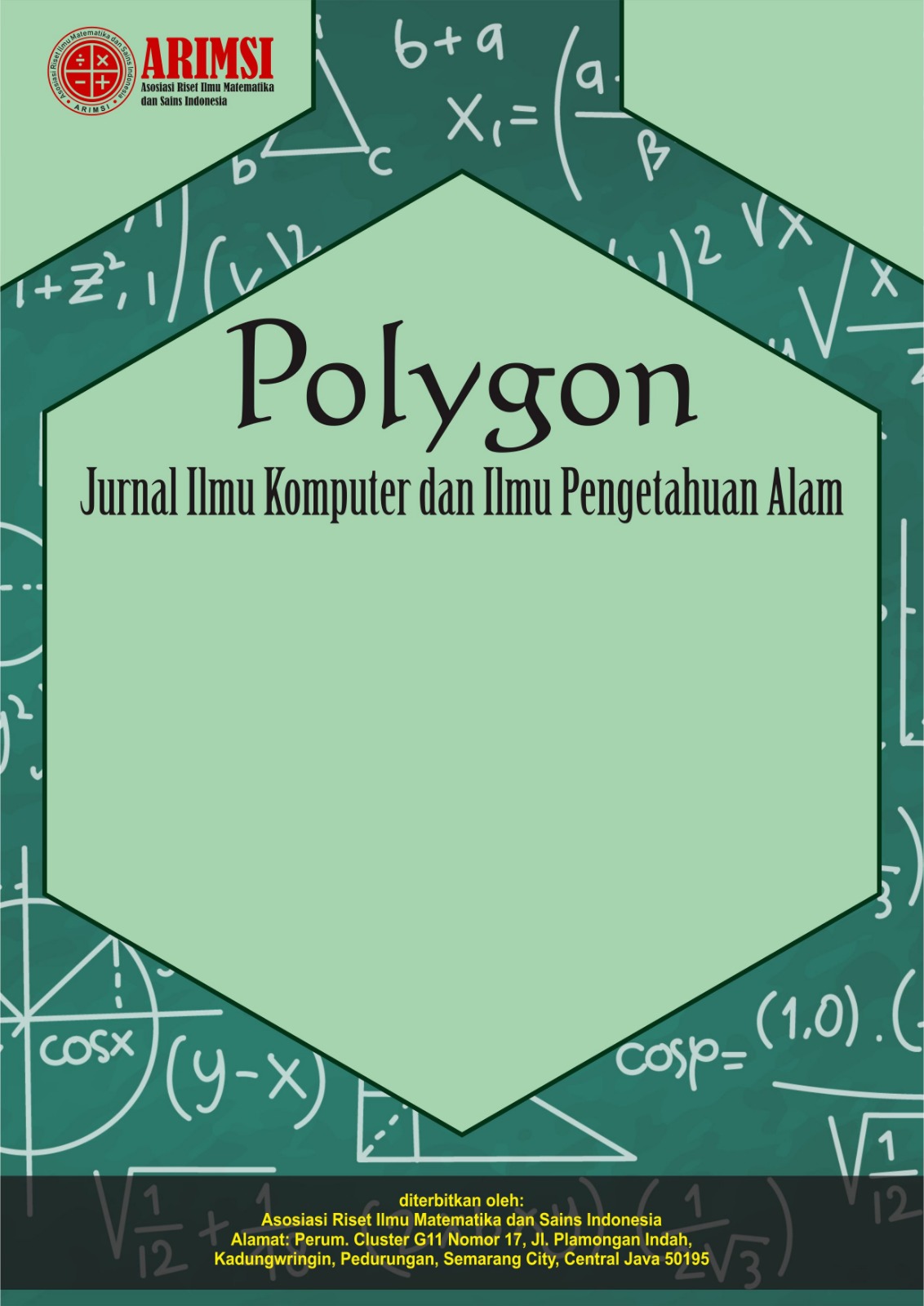Keberadaan Mikroplastik dalam Garam: Kajian Literatur pada Beberapa Kasus di Indonesia
DOI:
https://doi.org/10.62383/polygon.v3i1.400Keywords:
coarse salt, commercial salt, microplastic abundance, microplastic size, microplastic typesAbstract
Plastic waste is widely found in the environment. Degraded plastic waste eventually forms microplastics. Microplastic pollution has been widely found in various elements in the environment, such as in water, in the air, in organisms, and in salt. The study of microplastics in salt in Indonesia is still very limited, so a literature review was carried out on research carried out in the time period from 2020 to 2024. The parameters observed included abundance, shape, size, color and type of microplastics. The abundance obtained was between 46 particles/kg to 29 particles/g or assumed to be equivalent to 29,000 particles/kg in coarse salt. The abundance of microplastics in commercial salt was between 40 particles/kg to 306.67 particles/kg. The forms of microplastics found included fibers, films, fragments, filaments, and pellets. The microplastics found were black, transparent, red, blue, green, purple, brown, and white. Meanwhile, the size of the microplastics found was between 0.017 mm to 4.936 mm. Microplastic types were only found in one article, including polyvinyl chloride (PVC), polyurethane (PU), polyester, nylon, and polyethylene terephthalate glycol (PETG).
Downloads
References
Amqam, H., Afifah, N., Al Muktadir, M. I., Devana, A. T., Pradana, U., & Yusriani, Z. F. (2022). Kelimpahan dan karakteristik mikroplastik pada produk garam tradisional di Kabupaten Jeneponto. Promotif: Jurnal Kesehatan Masyarakat, 12(2), 147–154.
Citrasari, N., Oktavitri, N. I., & Aniwindira, N. A. (2013). Analisis laju timbunan dan komposisi sampah di permukiman pesisir Kenjeran Surabaya. Berkala Penelitian Hayati, 18(1), 83–85. https://doi.org/10.23869/161
Cordova, M. R. (2017). Pencemaran plastik di laut. Oseana, 42(3), 21–30.
Fauzi, M. A. (2023). Identifikasi mikroplastik udara dan PM 2.5 pada sentra industri tahu Desa Tropodo Kecamatan Krian Kabupaten Sidoarjo. Environmental Pollution Journal, 3(2), 747–757. https://doi.org/10.58954/epj.v3i2.132
Gadi, D. S., Dawa, U. P. L., Lakapu, M. M., Bulan, R. E., & Teul, M. K. (2024). Mikroplastik pada air tambak dan partikel garam “krosok” di UD Abraham Desa Oli’o Kabupaten Kupang. Journal of Marine Research, 13(3), 587–594.
Karimah, M. N. U., & Alfiah, T. (2023, November). Analisis kandungan mikroplastik pada air tambak, garam mentah dan garam komersil di Surabaya. In Prosiding Seminar Nasional Sains dan Teknologi Terapan.
Mirad, A., & Yoswaty, D. (2020). Identification microplastic waste in seawater and the digestive organs of Senangin fish (E. tetradactylum) at Dumai City sea waters. Asian Journal of Aquatic Sciences, 3(3), 248–259.
Murpa, M. I. T., Baharuddin, A., & Gafur, A. (2021). Kandungan mikroplastik pada garam di Pasar Terong Kelurahan Bontoala Kota Makassar. HIGIENE: Jurnal Kesehatan Lingkungan, 7(1), 1–4.
Puspita, G. D., Nugroho, P., & Nugraha, G. A. (2022). Kandungan mikroplastik garam tambak di Juwana–Kabupaten Pati, Jawa Tengah. Biogenerasi Jurnal, 7(2), 75–82.
Qonitan, F. D., Suryawan, I. W. K., & Rahman, A. (2021). Overview of municipal solid waste generation and energy utilization potential in major cities of Indonesia. Journal of Physics: Conference Series, 1858, 012064. https://doi.org/10.1088/1742-6596/1858/1/012064
Seftianingrum, B., Hidayati, I., & Zummah, A. (2023). Identifikasi mikroplastik pada air, sedimen, dan ikan nila (Oreochromis niloticus) di Sungai Porong, Kabupaten Sidoarjo, Jawa Timur. Jurnal Jeumpa, 10(1), 68–82.
Supriyo, E., Julianto, M. E., & Mawarganis, A. O. (2024). Kandungan mikroplastik pada garam dapur (Microplastics content in salt). Innovative: Journal of Social Science Research, 4(4), 1642–1652.
Suyanti, Suptiharyono, & Anggoro, S. (2019). Pengolahan wilayah pesisir terpadu. Semarang, ID: UNDIP Press.
Syarifah, N., Sari, B. S. E., & Hanapi, A. (2022). Identifikasi mikroplastik di udara pada false solution technology. Environmental Pollution Journal, 1(3). https://doi.org/10.58954/epj.v1i3.67
Taka, A. S. M. D., Lada, C. O., & Amat, A. L. S. (2023). Differences in microplastic content in commercial salt and salt at the Semiringkai coastal local center in Kupang City and Kupang Regency. Indian Journal of Community Medicine, 48(2), 238–240.
Yona, D., Zahran, M., Fuad, M., Prananto, Y. P., & Harlyan, L. (2021). Mikroplastik di perairan: Jenis, metode sampling dan analisis laboratorium. UB Press.
Yu, Q., Hu, X., Yang, B., Zhang, G., Wang, J., & Ling, W. (2020). Distribution, abundance and risks of microplastics in the environment. Chemosphere, 249. https://doi.org/10.1016/j.chemosphere.2020.126059
Downloads
Published
How to Cite
Issue
Section
License
Copyright (c) 2025 Polygon : Jurnal Ilmu Komputer dan Ilmu Pengetahuan Alam

This work is licensed under a Creative Commons Attribution-ShareAlike 4.0 International License.





